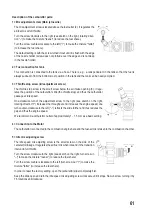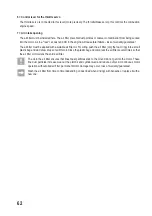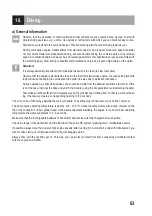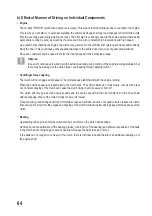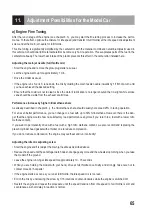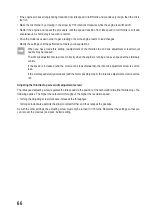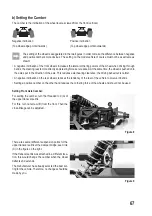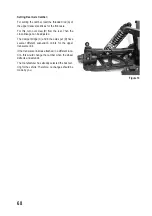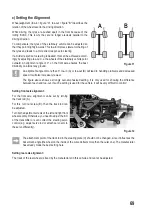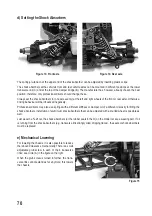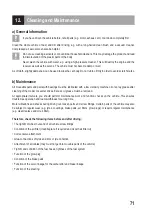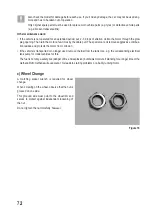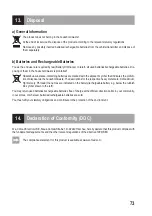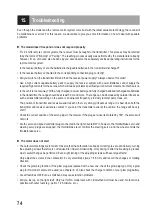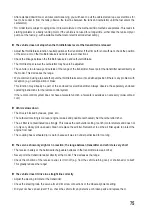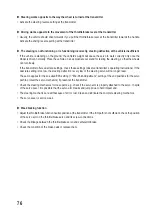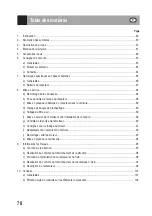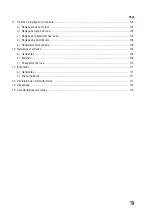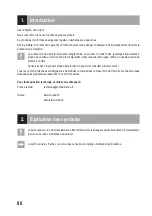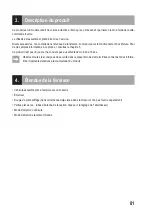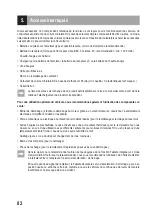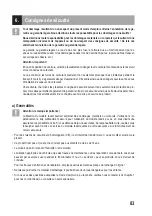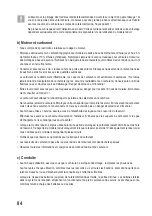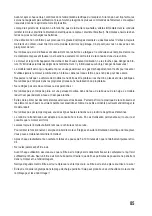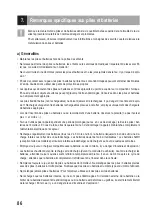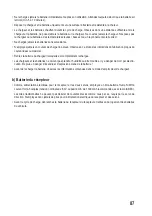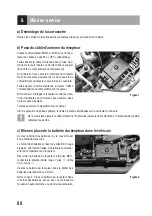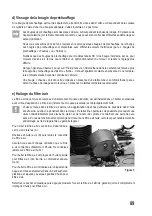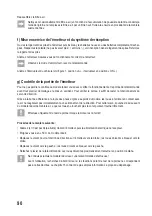
75
• After extended downtime or at initial commissioning, you will have to pull the cable started rope several times for
fuel to be socket in from the tank (observe the fuel line between the tank and carburettor until the fuel enters the
carburettor).
• RC model fuel is subject to aging since it draws moisture or the methanol/nitro methane evaporates. This leads to
starting problems or a badly running motor. If the vehicle is not used for a longer time, either drive the tank empty or
pump out the fuel (e.g. with a suitable mechanical or electrical model fuel pump).
u
The vehicle does not stop when the throttle/brake lever at the transmitter is released
• Adjust the throttle/brake function neutral position at the transmitter. If the trim path is not sufficient, check the position
of the servo arm on the throttle/brake servo and its screw connections.
• Check the linkage between the throttle/brake servo and carburettor/brake.
• The throttle stop screw at the carburettor may have to be adjusted.
• The vehicle is too far away and outside of the range of the transmitter. Never point the transmitter aerial directly at
the model. This decreases the range.
• We recommend using a fail-safe that puts the throttle/brake servo into a defined position if there is any problem with
reception (e.g. neutral position or brake.
This function may already be part of the enclosed receiver/transmitter. Always observe the separately enclosed
operating instructions for the remote control system.
If the remote control system does not have a fail-safe function, a fail-safe is avialle as an accessory (www.conrad.
com).
u
Vehicle slows down
• The drive is blocked by leaves, grass, etc.
• The carburettor setting is too lean (engine is weak and possible overheated). Set the carburettor richer.
• The air filter is contaminated too strongly. This makes the carburettor setting too rich (motor stutters and does not
or only very slowly pick up speed). Clean or replace the air filter. Remember to oil the air filter again to protect the
engine from dust.
• The coupling has overheated (or is worn) because it was run under partial load for too long.
u
The servos show only slight or no reaction; the range between transmitter and vehicle is very short
• The receiver battery or the batteries/rechargeable batteries in the transmitter are weak or flat.
• Never point the transmitter aerial directly at the model. This decreases the range.
• Check the condition of the receiver aerial. Is it torn off (e.g. from the vehicle turning over) or shortened or coiled?
This greatly reduces the range!
u
The vehicle doesn't drive in a straight line correctly
• Adjust the steering trimmer at the transmitter.
• Check the steering rods, the servo arm and its screw connections or the wheel alignment setting.
• Did your car have an accident? If so, check the vehicle for any defective or broken parts and replace them.
Содержание 1456608
Страница 154: ...154 ...
Страница 155: ...155 ...

